Common Foot Conditions
These are some of the most common foot conditions.
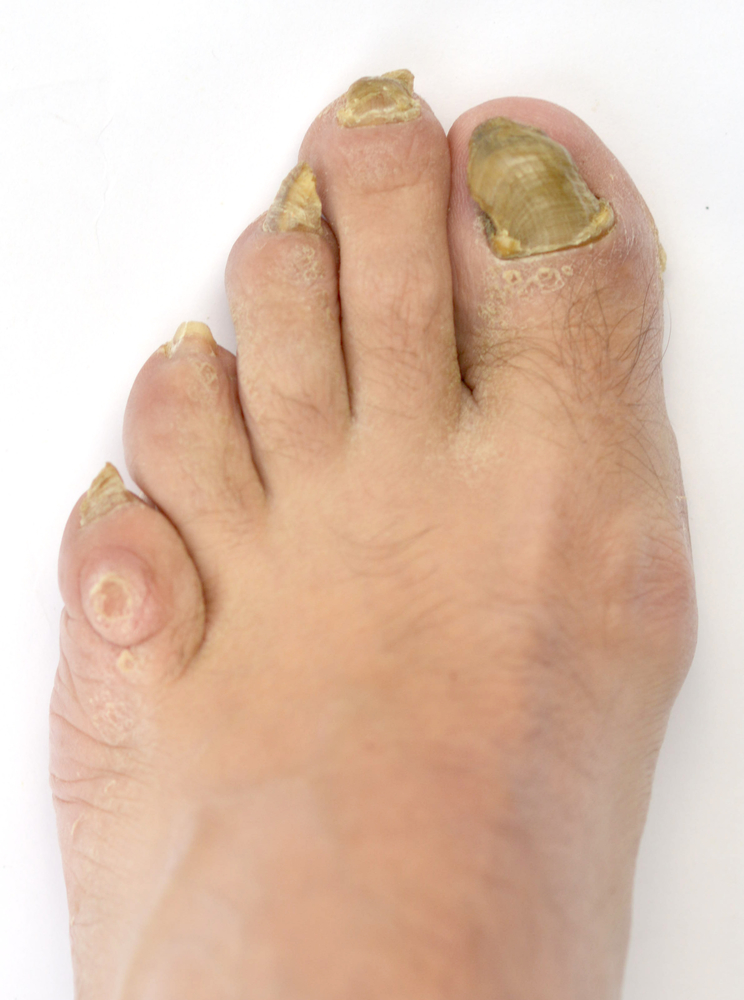
Corns
Corns are areas of hard skin, usually in certain distribution patterns on the base or sides of the foot, on the toes, or in between the toes. They are sometimes found under the nails itself.
There are three basic types of corn and they can be very painful, often being at sites that are sensitive, and that are pressure points with foot wear and when walking.
The hard skin develops a central core (like the shape of an ice cream cone!) which digs in to the foot and causes the characteristic pain. Often, once this core is removed and the surrounding hard skin pared down relief is instantaneous. Unfortunately corns can reoccur and the only way to prevent pain is by routine maintenance.
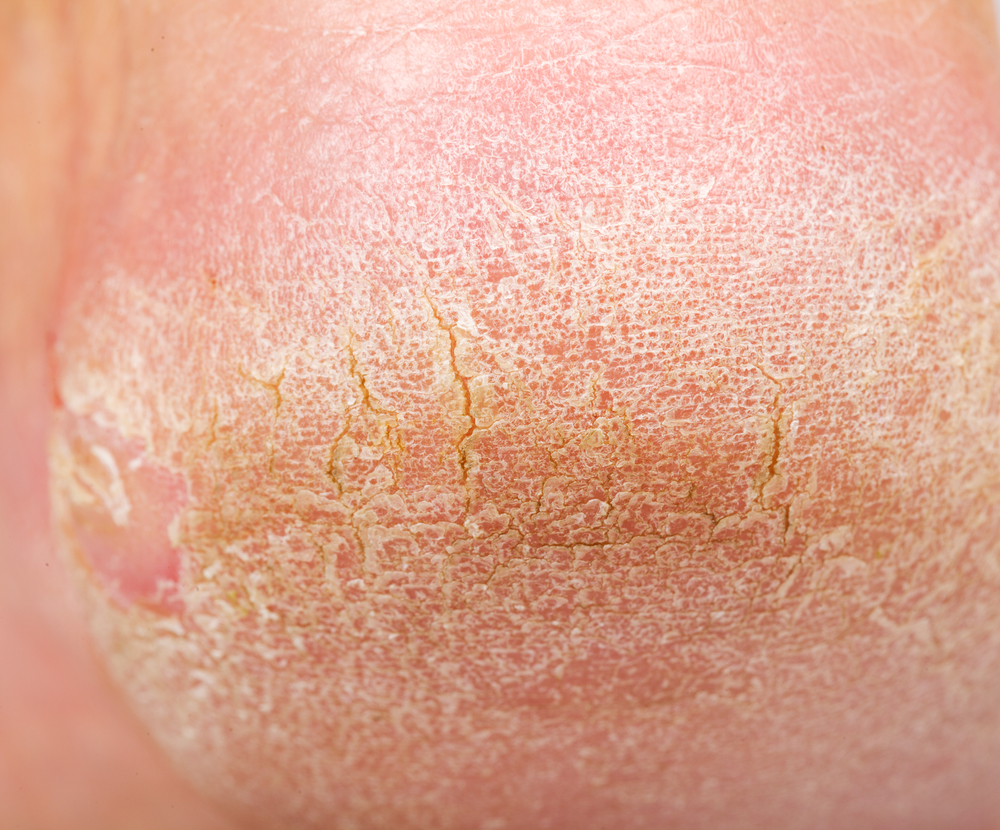
Callus or Hard skin
These are areas of hard skin which most often build up in areas that rub against your shoes or form because of the way you walk. They are a useful form of defense for the body to prevent damage to an area, however they can become extremely thickened and yellow, and cause a lot of discomfort.
Your practitioner can remove this callus and help alleviate pressure at a certain area, as well as advise how to help manage build up.
Verruca
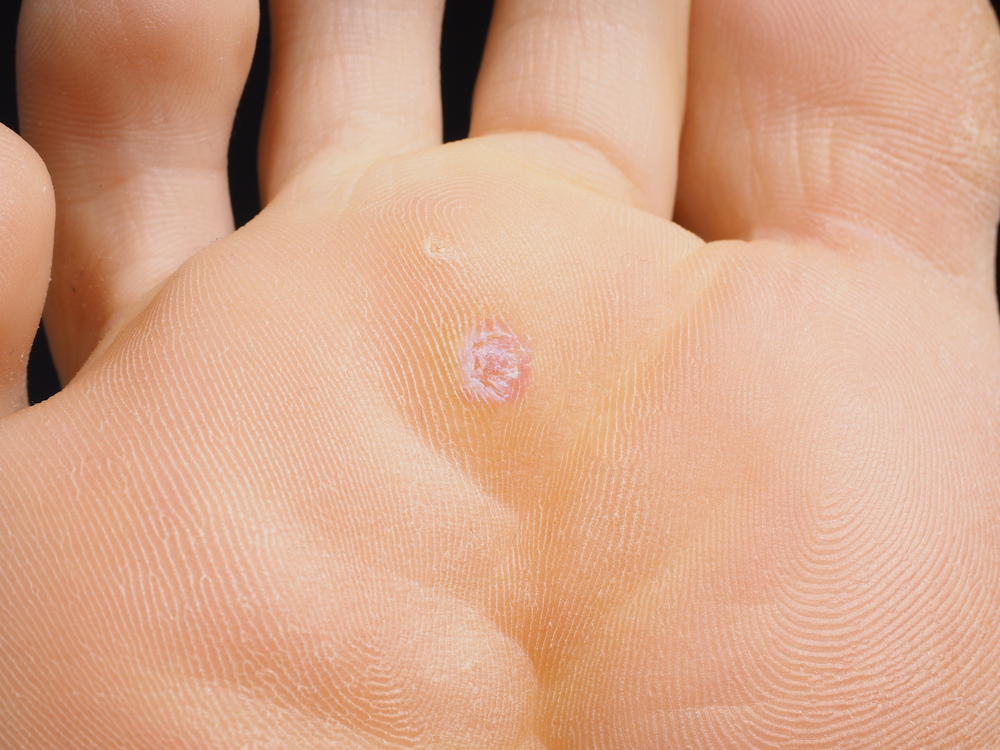
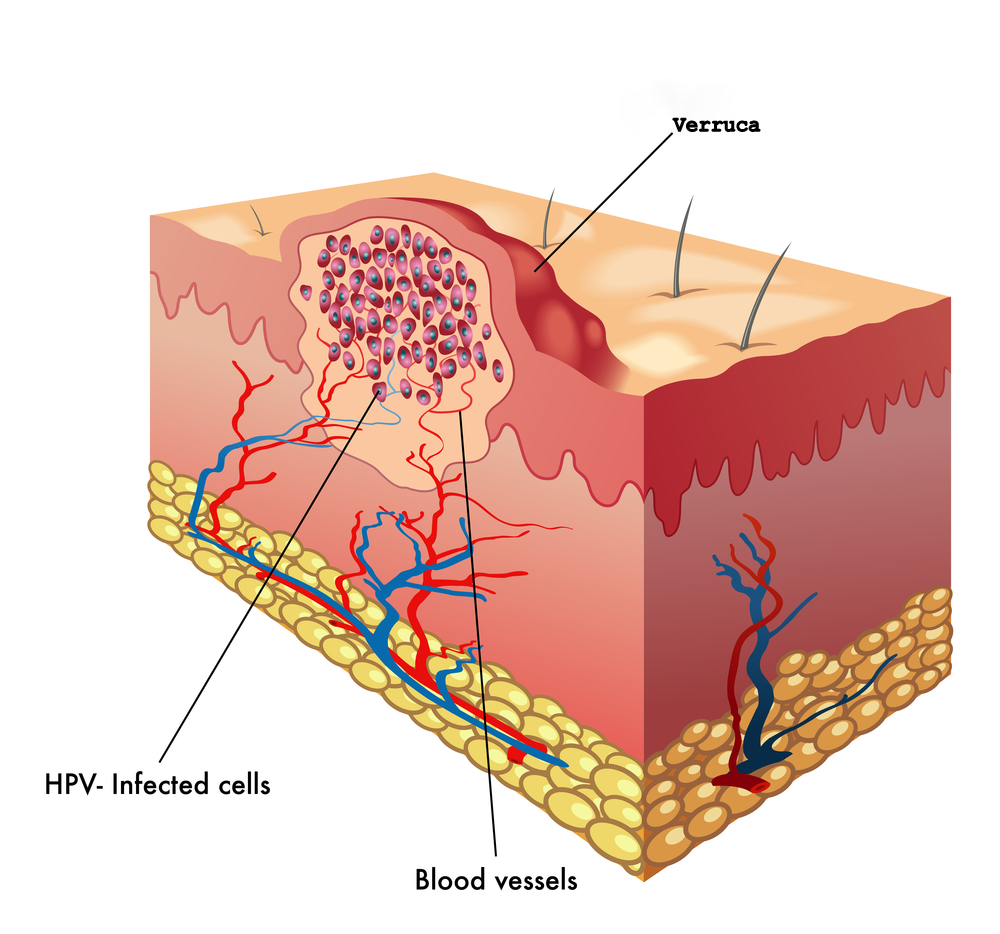
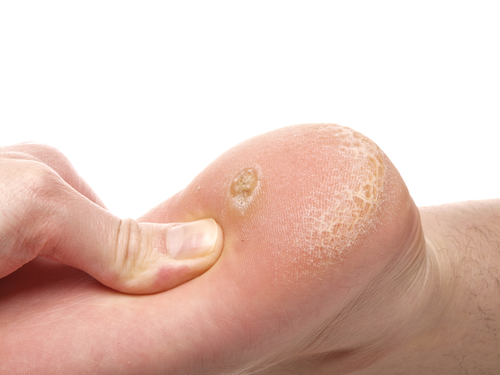
A verruca is a wart caused by the HPV (Human Papillomarvirus). Most people will experience an infection at some time in their life.
The virus is within the body’s system, the symptoms showing most commonly as round patches on the on the soles of the feet, with a cauliflower like surface. They sometimes show tiny dark spots, which, contrary to popular belief, are not ‘seeds’, but tiny spots of blood. Verrucae have a very good blood supply and quite often bleed when treated.
They are spread by contact either from person to person or by surface contact.
There are many views on the treatment of verruca with many G.P’s recommending that unless they are causing particular problems, they should be left alone to let the body’s immune system fight the virus. Many verrucae will spontaneously clear, approx 65%, after a two year period.
Treatment requires commitment to both home care and professional treatment. Depending on your medical status treatments can include tea tree oil, acids, caustic agents or cryosurgery.
Once treatment commences you can expect to self treat up to every day, and to received professional treatment every one or two weeks. Special appointments are available for verruca follow up treatments, that are shorter than normal, and just deal with the verruca site.
Please contact your Foot Health Practitioner for more information. Please note that initial verruca treatment will involve a full length consultation including full medical history before treatment will commence. Although verruca treatment can be very successful it cannot be guaranteed.

Thickened nails and toenail cutting
Age, certain medical conditions and trauma or injury can cause toenails to become thick and hard. If you find it difficult to cut your nails, or find they are becoming uncomfortable we can use our specialist instruments to cut them and help reduce the thickness.
Fungal infections
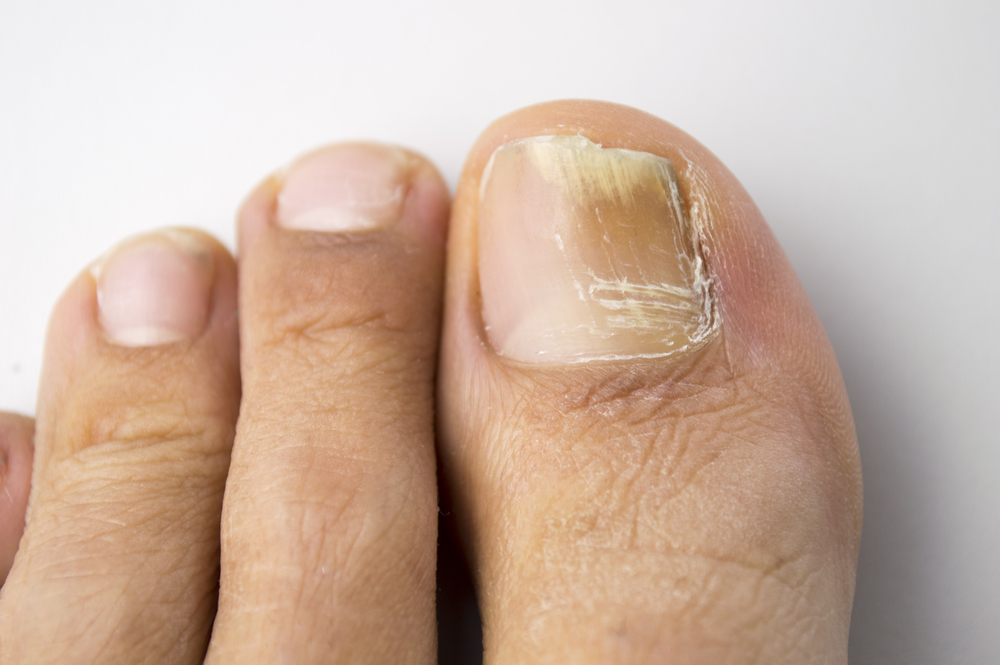
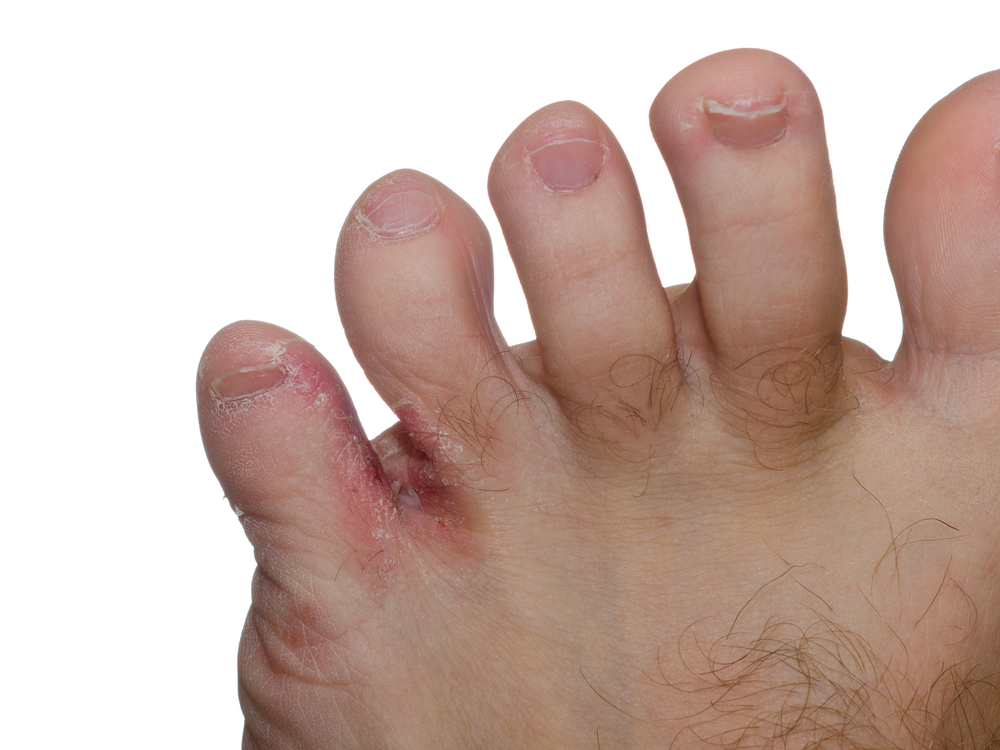
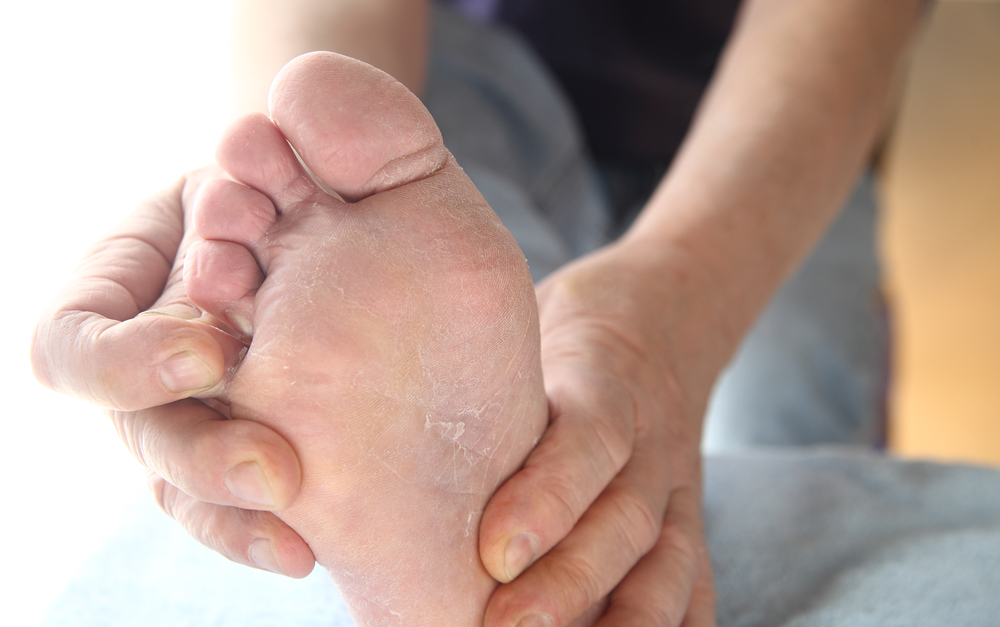
Fungal infections are very common both on the feet and toenails.
‘Athletes Foot’ is the most common and can range from small patches of dry, scaly or itchy skin to whole foot cover, with serious sores, cracks and open wounds.
There are many over the counter treatments available but many just treat the symptoms rather than the actual fungal spores that cause the infection. Your Practitioner can provide treatment and advise on the best course of action to help prevent this uncomfortable condition.
Fungal infections in nails are also very common and usually discolour the nail to begin with then work down the nail. They can become soft, smelly, blackened and eventually detach from the nail bed.
This type of infection can spread very easily and you may find other toenails becoming infected.
Treatment varies and can include removal of the affected area, which will get rid of as much of the active infection as possible as well as topical treatments to apply. Oral medication can be taken but this is only by prescription from your G.P and for more serious infections.
Diabetic Footcare
Many patients, particularly those with diabetes or related medical problems are at a higher risk of suffering foot problems.
Some diabetics will loose sensation in their feet as part of the disease and sometimes the body will not heal as quickly if the patient has a wound or sore. Some diabetic patients can develop sores, ulcers and other wounds that began at the site of a corn or callus, and can suffer a higher rate of complications with such conditions.
Many diabetic patients will be seen under the NHS as a routine check up, however, prevention is better than cure, and your Foot Health Practitioner can help with the ongoing maintenance of your feet to avoid any problems.
A full assessment is done of all patients but diabetic patients will be assessed more regularly for any sign that their condition is changing.
Corns and callus, verrucae and potential ingrowing toenails can be treated before they become a potential problem, and advice can be given on choice of footwear and hosiery to help maintain healthy feet.
Please note the advice and photographs shown above are for general guidance only. They cover a small number of the most common foot conditions. These not intended to and cannot replace proper care from a trained Foot Health Professional and cannot provide a definitive guide to treatment.
Please consult a trained professional if you have any concerns with regard to a foot or toenail condition and the owner of this website does not take any responsibility or liability from the misinterpretation of this information.
Ref source : Menz, H. 2008, Foot Problems in Older People
Lorimer et al, 2006, Neales Disorders of the Foot
